Mastering the Art of Aquascaping the Nano Tank: A Beginner's Guide
Looking to start aquascaping the nano tank, but not sure where to begin? You’re in the right place. In this guide, we’ll show you the ropes of creating a vibrant and proportional nano-tank aquascape that is pleasing to the eye and suitable for its inhabitants. Discover the fine art of selecting compatible plants and creatures, and learn how to maintain the delicate balance within your tiny ecosystem. Get ready to embark on a journey that makes a big impact in a small space.
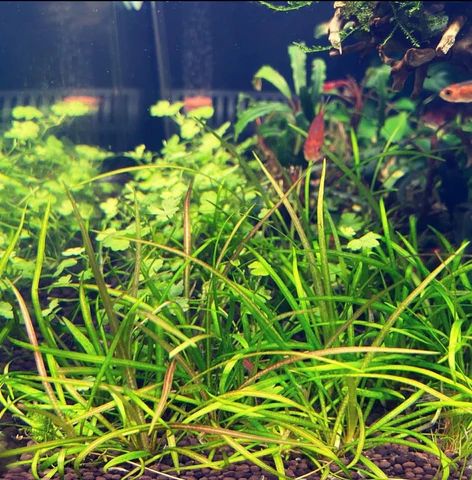
Key Takeaways
-
Nano tanks, typically less than 10 gallons, offer a compact and affordable way to explore aquascaping without the space or maintenance requirements of larger aquariums.
-
Designing a nano tank involves creatively using rocks, driftwood, and carefully selected plants to create a beautiful, balanced miniature ecosystem that’s both pleasing to the eye and functional for its inhabitants.
-
For a thriving nano tank, choose appropriate equipment and occupants based on their size and needs, and maintain the tank with regular water changes, nutrient management, algae control, and plant pruning.
Exploring Nano Tanks: Small but Mighty
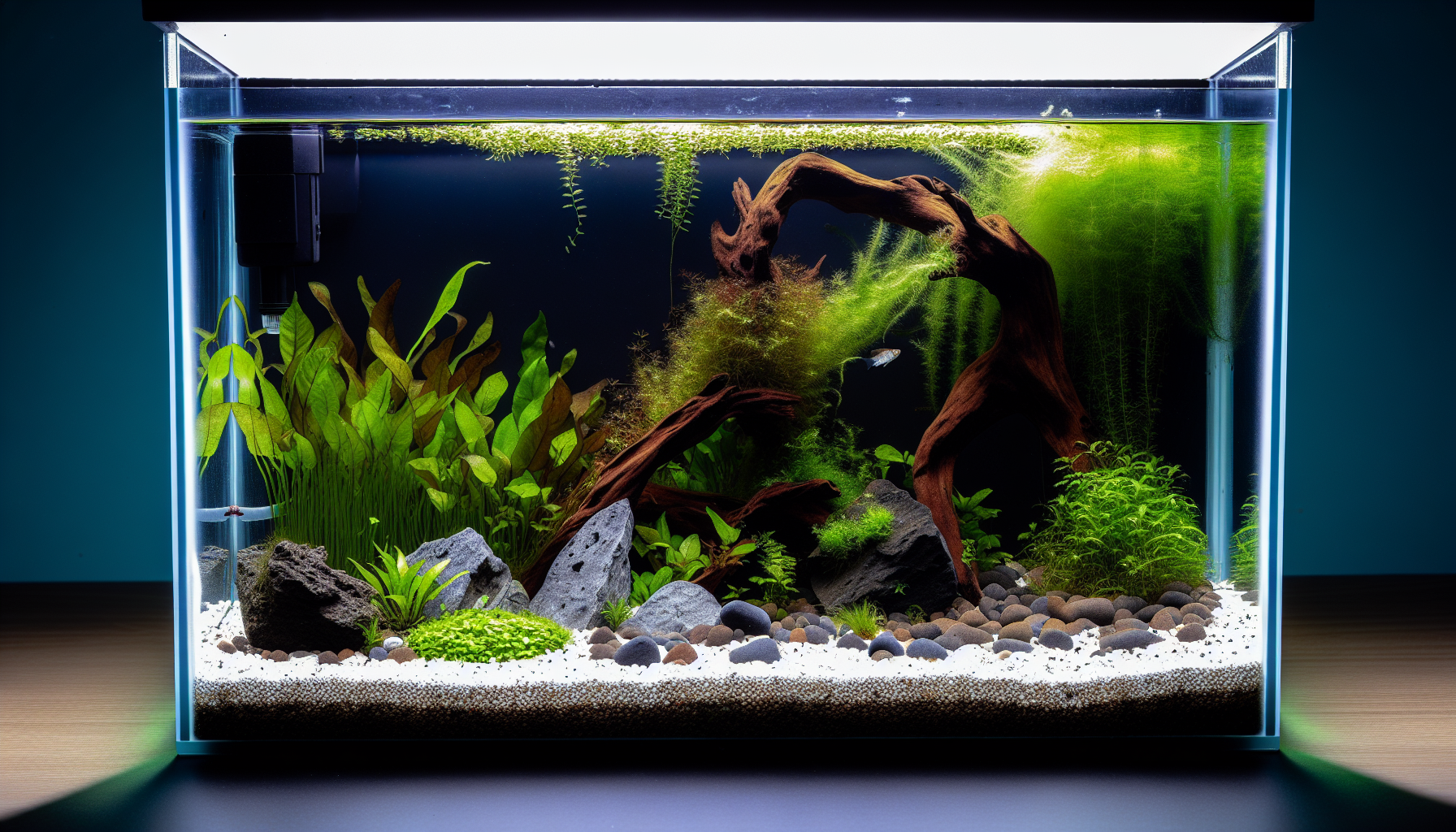
The world of nano tanks is an intriguing one, a petite reminder of the vast aquatic wilderness. A nano tank is essentially a small tank, or a nano aquarium, usually holding less than 10 gallons of water. The smallness of these nano aquariums is their biggest charm, enabling you to create a pocket-sized slice of nature. They are perfect for planted tanks, creating a verdant, tranquil oasis that is both visually stunning and perfect for smaller aquatic creatures. In contrast to a large tank, small tanks like nano tanks require less space and maintenance, making them an ideal choice for many hobbyists.
Selecting a nano tank extends beyond its compact size; it also involves delving into the craft of small-scale aquascaping. These tanks, affordable and manageable, present a distinctive challenge for crafting petite aquatic landscapes. Their compactness makes them an ideal choice for those with space constraints, providing an opportunity to enjoy the invigorating pastime of aquascaping without the concern of bulky equipment or spatial limitations.
What is a Nano Tank?
What defines a nano tank? These miniature aquariums, generally holding less than 10 gallons, serve as the perfect setup for a planted aquarium. Their diminutive size belies the infinite possibilities they offer to aquascaping fans. Ideal for those with spatial limitations or those keen to begin on a smaller scale, nano tanks truly embody the essence of ‘less is more’. Despite their size, they brim with potential and aesthetic allure.
The beauty of a nano tank lies in its versatility. It can house a range of aquatic flora and fauna, creating a microcosm of an aquatic ecosystem. The small scale allows you to experiment with different aquascaping styles and designs without the commitment of a larger tank. Whether you’re a seasoned aquascaper or a beginner, a nano tank is a perfect canvas to unleash your creativity.
Why Choose a Nano Tank?
Opting for a nano tank as part of your aquascaping adventure boasts plenty of benefits. A key advantage lies in their affordability. Initial setup and ongoing maintenance costs of nano tanks are budget-friendly. Additionally, they use less water and electricity, positioning them as an environmentally friendly and economically wise selection for aquascaping devotees.
Not to mention, nano tanks are an excellent option for beginners. Their smaller size makes them less daunting to set up and maintain. It’s the perfect platform for you to learn and understand the basics of aquascaping before venturing into larger tanks. Plus, the small size of nano tanks makes them fit into any living space, allowing you to bring a piece of nature into your home, no matter how limited your space might be.
Designing Your Nano Tank Aquascape

Designing your nano tank aquascape is where the fun begins. It’s like painting a picture, but instead of paint, your palette includes rocks, driftwood, and a variety of nano aquarium plants. The goal is to create a visually appealing design that perfectly mimics the beauty of natural aquatic environments. The design of your nano tank will not only impact its aesthetic appeal but also its functionality.
As you design your nano tank aquascape, bear in mind that this is your canvas. You possess the liberty to craft any scene - be it a verdant jungle, a peaceful meadow, or a rugged landscape. The design ought to harmoniously incorporate hardscape elements, plants, and aquatic life, forging an environment that captivates visually and caters to your aquatic dwellers.
Hardscape Elements
Hardscape elements constitute the foundation of your aquascape design. They encompass rocks, driftwood, and other non-living materials that contribute structure and depth to your aquascape. Commonly selected elements for nano tank aquascaping are Dragon stone, Seiryu stone, and River stones for rocks, alongside Manzanita wood, Malaysian driftwood, and Mopani wood for driftwood. These hardscape elements elevate the aesthetic charm of your nano tank and also serve as hiding and spawning places for your aquatic residents.
When placing your hardscape elements, aim to mimic natural environments. Rocks and driftwood can be arranged to replicate mountain ranges, riverbeds, or forest floors. Remember to create a sense of depth and balance in your layout. The hardscape should guide the viewer’s eye through the tank and create focal points that draw attention.
After arranging your hardscape, it’s time to prepare them for the tank. For driftwood, this means soaking it and changing the water when it gets dark from tannins.
Plant Selection
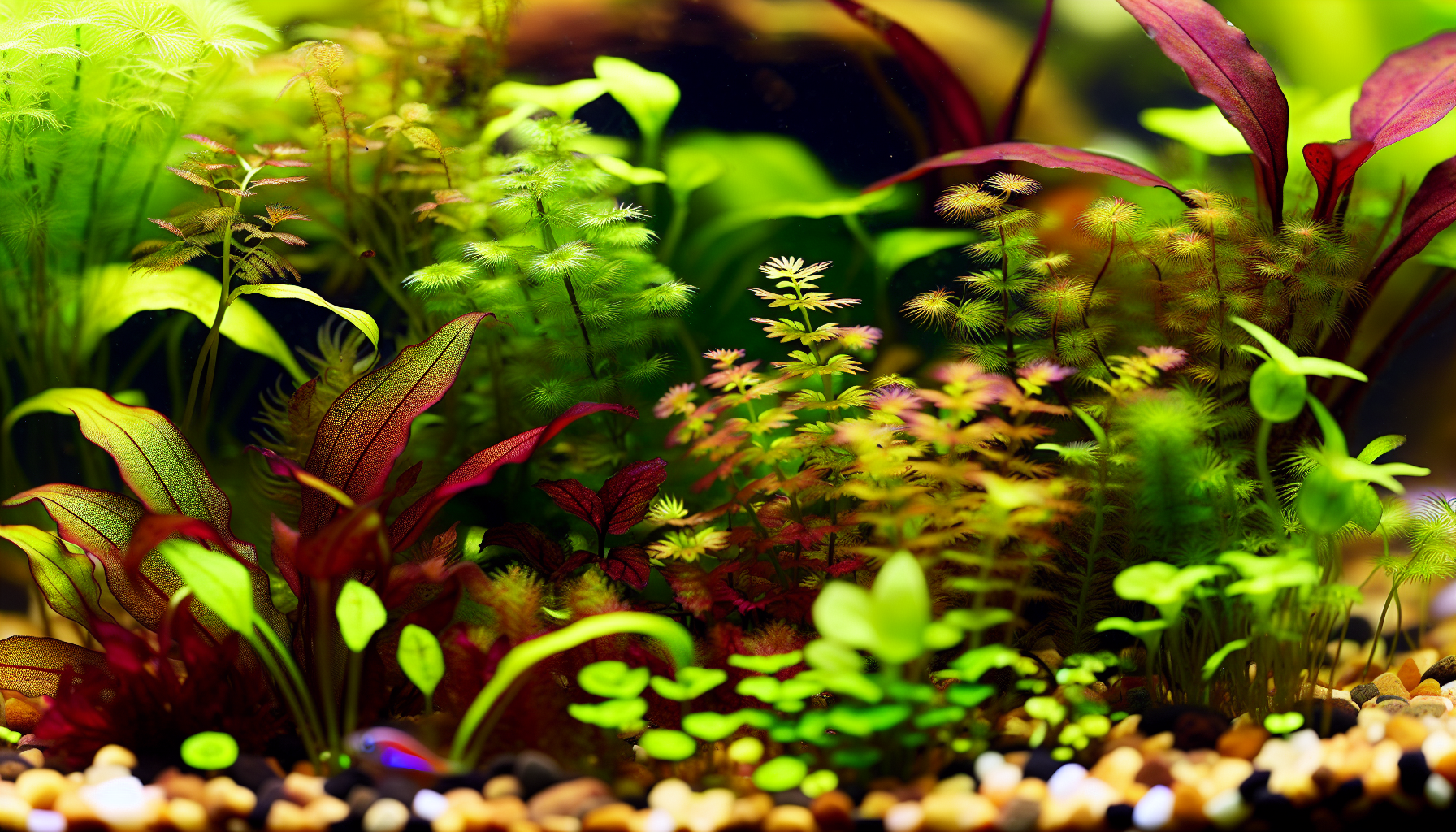
Choosing the best plants for nano tank is vital. You need plants that are fitting to the tank’s diminutive size and won’t clutter the aquarium. Optimal choices for nano tanks are diminutive, slow-growing plants such as:
-
AnubiasJava ferns
-
Hemianthus glomeratus
-
Hemianthus callitrichoides ‘Cuba’
-
Riccardia sp.
-
Eleocharis sp. ‘Mini’
-
Dwarf hairgrass
-
Bucephalandra sp.
-
Cryptocoryne parva
These plants not only snugly fit within the limited space of a nano tank but also enhance its aesthetic allure in a planted tank setting.
While choosing your aquatic plants, also consider their care requirements. For instance, Hemianthus species require regular fertilization and some amount of CO2 for optimal growth. The goal is to create a verdant, lush environment that is both visually pleasing and capable of supporting the health and wellbeing of your aquatic inhabitants.
Balancing Aesthetics and Functionality
Balancing aesthetics and functionality is a crucial aspect of nano planted aquarium. While the visual appeal of your nano tank is important, it should not come at the expense of its functionality. The key is to create a design that looks good and is also practical for the inhabitants of your tank.
To achieve this balance, consider the placement of your plants and hardscape elements. They should be placed in a way that facilitates easy movement for your fish and shrimp, provides hiding spots, and does not hinder the filtration or heating systems. Also, avoid using large leaf plants as they can throw off the balance and depth of the nano tank.
There are no strict rules for designing your nano tank, so feel free to be creative and experiment with different ideas. Whether it’s minimalistic or densely planted, the choice is yours. It’s all about experimenting and finding what works best for you and your aquatic buddies.
Stocking Your Nano Tank: Choosing the Right Inhabitants
Upon setting up your nano tank, the next step involves selecting its inhabitants. This decision is as critical as the tank’s design as appropriate inhabitants breathe life and dynamism into your tank, boosting its overall charm. When picking out inhabitants for your nano tank, take into account their size, mutual compatibility, and care needs.
The ideal inhabitants for nano tanks, perfect for those who love aquarium fish, are:
-
Small fish species like ember tetras and ruby red pencilfish
-
Invertebrates like red, yellow, orange, and blue varieties of shrimp
-
Snails, which make for great tank inhabitants due to their algae-eating abilities and low bioload.
Best Fish for Nano Tanks
When it comes to fish for your nano tank, size does matter. Small, hardy fish species are the best choices. They are easy to care for and can comfortably live in the limited space of a nano tank. Endler’s livebearers, for instance, are a perfect match for nano tanks. They are small, hardy, and come in vibrant colors, adding a lively vibe to your nano tank.
Another great species for nano tanks is the Pygmy Corydoras. These little guys are not only small in size but also excellent cleaners. They feed on food and bloodworms that end up at the bottom of the tank, helping to keep your tank clean. Remember, when choosing fish for your nano tank, consider their size, temperament, and care requirements to ensure they live a happy and healthy life in their new home.
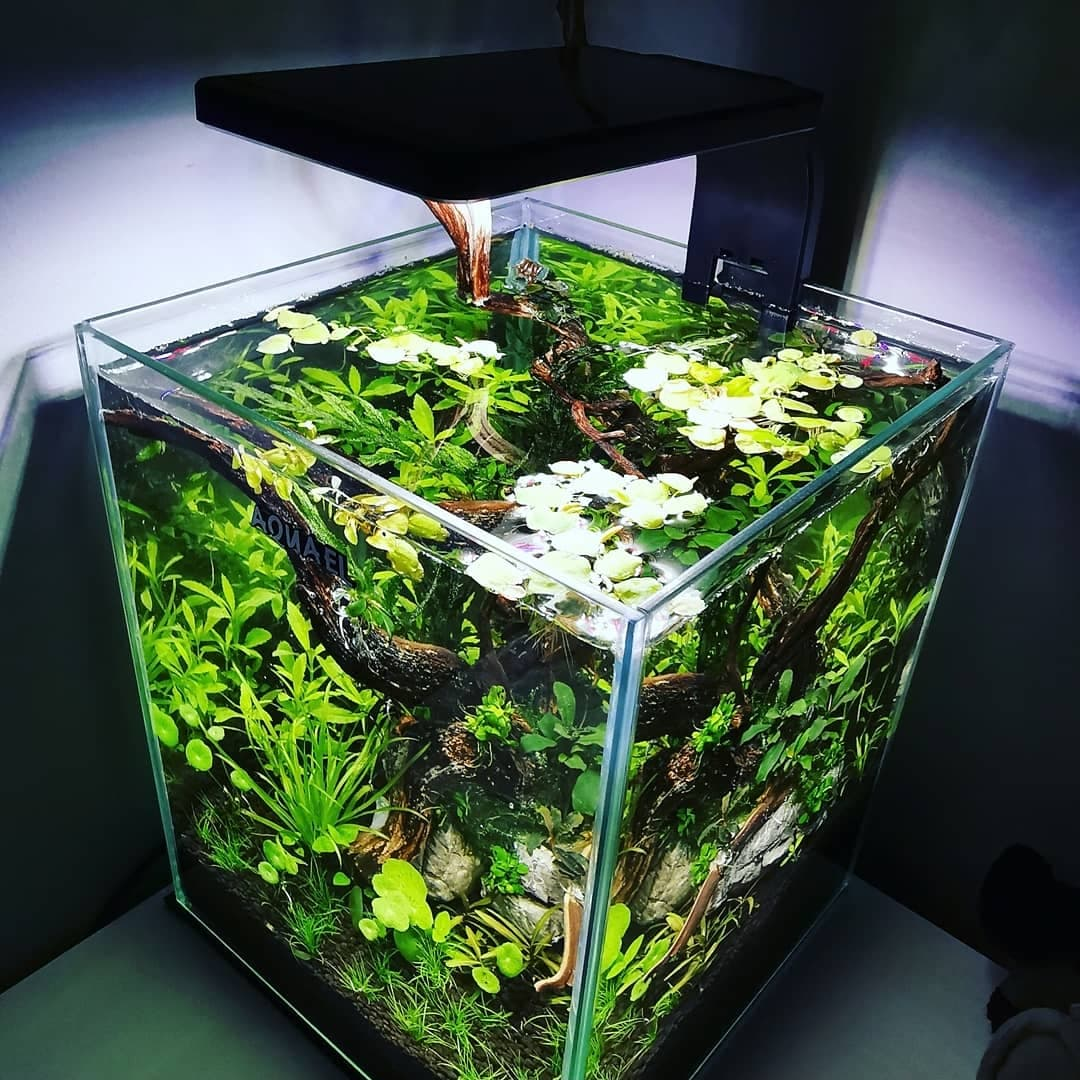
Shrimp and Snails: The Unsung Heroes
Shrimp and snails may be small, but they play a big role in maintaining the health and cleanliness of your nano tank. These little critters are efficient algae eaters, helping to keep algae growth in check. Shrimp varieties like Cherry Shrimp, Neocaridina Shrimp, and bee shrimp are great choices for nano tanks. They are small, good at keeping algae at bay, and come in various colors, adding a splash of color and liveliness to your tank.
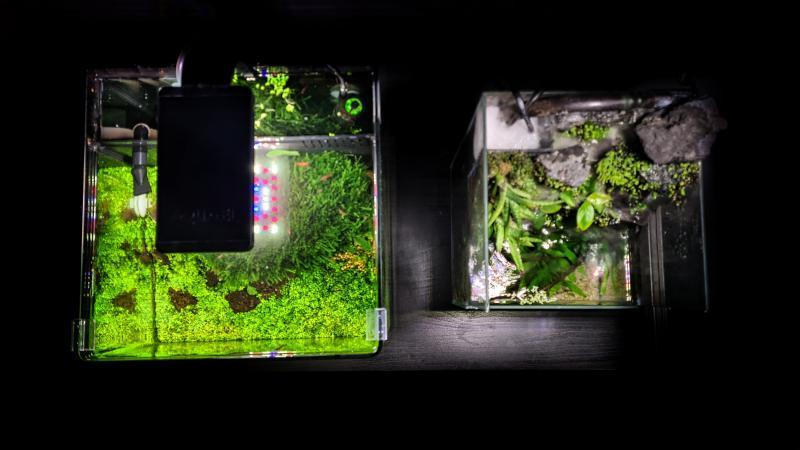
Snails too, make for great tank inhabitants. Snail varieties like:
-
Bladder Snail
-
Nerite Snail
-
Ramshorn Snail
-
Mystery Snail
-
Malaysian Trumpet Snail (MTS)
-
Assassin Snail
-
Rabbit Snail
are great choices for nano tanks. They are excellent algae eaters and work well in small aquariums. Remember, while shrimp and snails add to your tank’s biodiversity, they also contribute to its bioload. So, ensure you do not overcrowd your tank and maintain a balance.
Essential Equipment for Nano Tanks

To ensure your nano tank flourishes, certain vital equipment is required. This encompasses an apt filter, heater, and lighting system. These apparatuses help uphold optimal conditions within your tank, guaranteeing the health and wellbeing of its occupants.
While choosing your equipment, keep in mind the size of your tank and its inhabitants. For instance, most filters are made for larger tanks and may not be suitable for a small nano tank. You would need to choose a filter that is the right size and efficient enough to maintain water quality in the tank.
Nano Tank Filtration
Filtration is crucial in a nano tank. Given their small size, water conditions in nano tanks can change more easily compared to larger tanks. Therefore, an efficient, reliable filter is key to maintaining water quality. A good filter should be simple, the right size for the tank, and give off enough heat, like 5 watts per gallon of water. The Cobalt Aquatics 25 watt heater, for instance, is known for its accurate temperature control, making it an excellent choice for nano tanks.
When choosing a filter, it’s not just about efficiency, but also aesthetics. After all, a bulky filter can take away from the visual appeal of your nano tank. Therefore, choose a filter that blends seamlessly with your aquascape design and doesn’t obstruct the view of your tank.
Heating Solutions for Nano Tanks
Just like filtration, heating is also an essential aspect of nano tank maintenance. Given their small size, nano tanks are more susceptible to temperature fluctuations. Therefore, a reliable, accurate heater is essential to maintain the ideal temperature within your tank.
When choosing a heater for your nano tank, consider the following factors:
-
Accuracy: The heater should accurately maintain the desired temperature.
-
Reliability: It should be reliable enough to prevent any sudden temperature changes.
-
Size: The heater should be small enough to fit comfortably within your nano tank without taking up too much space or disrupting the aesthetics of your small tank aquascape.
Lighting for Plant Growth and Aesthetics
Lighting is another crucial aspect of nano tank maintenance. The right lighting not only enhances the visual appeal of your tank but also supports plant growth. When choosing lighting for your nano tank, consider the needs of your plants. Different plants have different lighting requirements. Therefore, the lighting system you choose should cater to the needs of the plants in your tank.
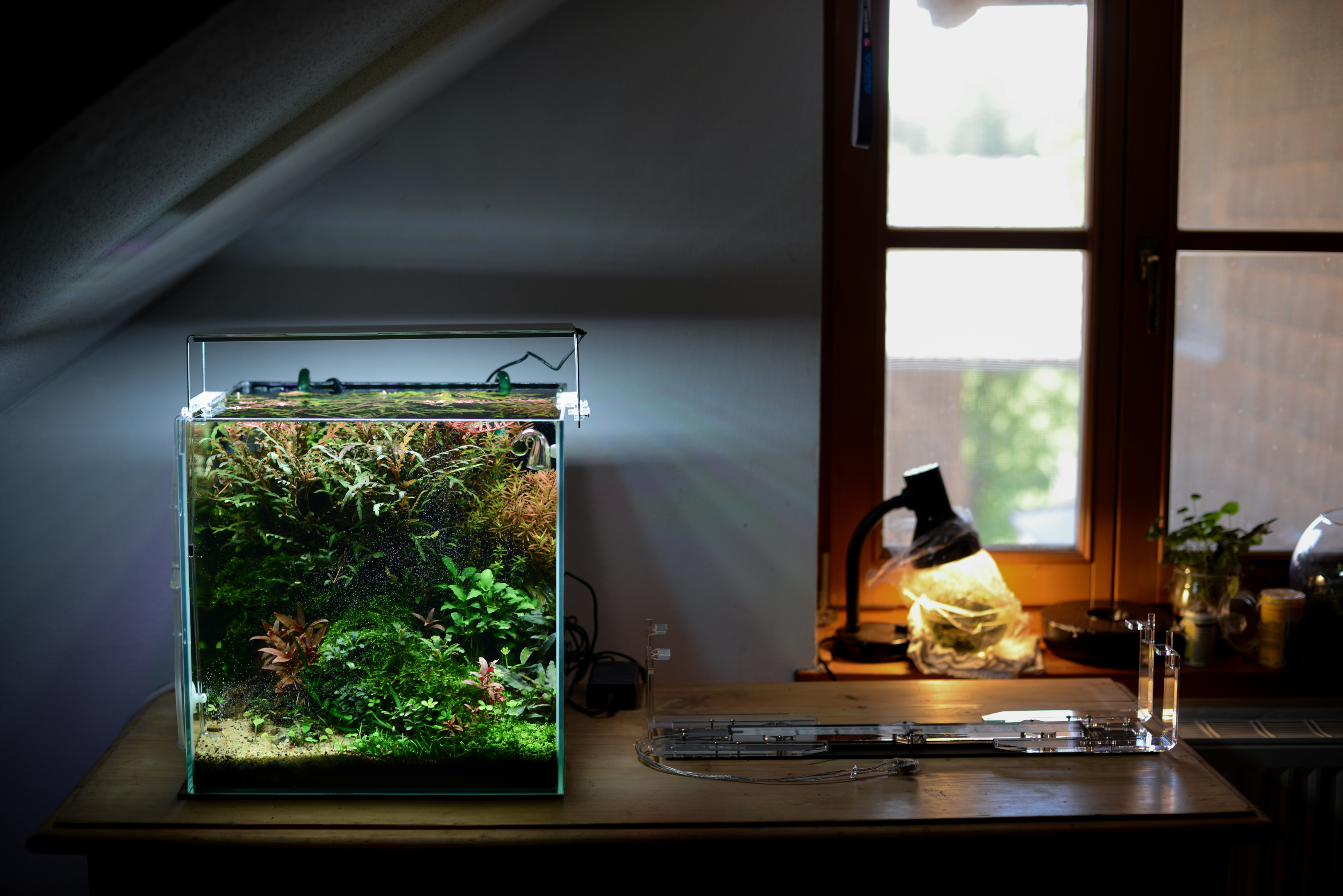
Apart from plant growth, lighting also plays a key role in enhancing the aesthetics of your nano tank. It brings out the colors of your fish and plants, making everything pop, and adds depth to your aquascape, making it look more vibrant and lively.
Maintaining Your Nano Tank: Tips and Tricks
Once your nano tank is established and filled with inhabitants, you face the true challenge - its upkeep! Regardless of their small stature, nano tanks necessitate frequent maintenance to assure the health of the inhabitants and maintain the tank’s appearance. From routine water changes to nutrient control and plant care, maintaining a nano tank demands some effort, but the outcome is undoubtedly rewarding!
Maintenance activities for nano tanks include:
-
Regular water changes
-
Monitoring and managing nutrient levels
-
Controlling and preventing algae growth
-
Regular pruning and care of plants
By keeping on top of these tasks, you can ensure your nano tank remains a healthy and vibrant ecosystem for its inhabitants.
Water Changes and Nutrient Management
Water changes and nutrient management are fundamental aspects of nano tank maintenance. Regular water changes are crucial to maintaining water quality and preventing the buildup of toxins and waste. Aim to change the water in your nano tank every week to two weeks, depending on the tank. Remember to also keep an eye on nutrient levels. Too many nutrients can lead to problems like algal blooms.
In addition to water changes, managing the nutrient levels in your nano tank is also crucial. A healthy nano tank requires nutrients like:
-
Nitrogen
-
Phosphorous
-
Potassium
-
Iron
-
Magnesium
-
Manganese
-
Carbon
Keeping a balanced nutrient profile in your tank can help keep algae in check and promote healthy plant growth.
Algae Control and Prevention
Algae is a common issue in nano tanks. If left unchecked, it can quickly overtake your tank, causing a host of problems. Therefore, controlling and preventing algae growth is essential. Regular water changes, proper lighting, and nutrient management can all help keep algae growth in check.
In addition to these measures, certain tank inhabitants can also help control algae. Shrimp and snails, for instance, are effective algae eaters. By including a few of these in your tank, you can keep algae levels under control and maintain a healthy, clean environment for your other tank inhabitants.
Plant Maintenance and Pruning
Proper care and maintenance of the plants in your nano tank are crucial. Regular pruning helps keep your plants healthy and your tank looking neat and tidy. You should trim your plants around three to five weeks after setting up your tank, and then whenever the plants start getting unruly.
In addition to pruning, regular fertilization is also important. Plants in a nano tank require micronutrients and macronutrients for healthy growth. Regularly dosing liquid fertilizer can help keep your plants thriving. Also, remember to remove any dead or decaying leaves as these can affect water quality.
Summary
In conclusion, nano tanks offer a world of possibilities for aquascaping enthusiasts. Despite their small size, they provide a platform to create stunning aquascapes that are both visually appealing and functional. From choosing the right tank and designing the aquascape to selecting the perfect inhabitants and maintaining the tank, each step of the process is an opportunity to express your creativity and create a slice of nature right in your own home. So, what are you waiting for? Dive into the world of nano tanks and discover the endless possibilities that await you!
Any questions? Our support team is always ready to answer them! Contact us directly via support@co2art.us!
Frequently Asked Questions
How do you aquascape a small aquarium?
To aquascape a small aquarium, use smaller leaves towards the back and larger leaves towards the front to create the illusion of depth. Additionally, consider adding a tapered sand pathway from front to back to enhance the sense of perspective.
What is the best tank for aquascaping?
For aquascaping, a 20-gallon+ tank is recommended as it provides more space for creativity and a healthier environment for the livestock. Just make sure to prioritize the well-being of the animals while creating an aesthetically pleasing setup.
Does nano tank need CO2?
Yes, adding CO2 to a nano tank can significantly improve the growth and vigor of the plants, especially if the tank contains slow-growing Easy-plants. Aim for a CO2 level of approximately 3 mg/L for good growth conditions.
What is a nano tank?
A nano tank is a small aquarium, usually under 10 gallons, ideal for those into aquascaping but with limited space. It's perfect for creating beautiful underwater landscapes.
Why choose a nano tank?
You should choose a nano tank because they are affordable, low-maintenance, and great for beginners, while also fitting into small living spaces. They're perfect for enjoying aquascaping without a huge commitment.




